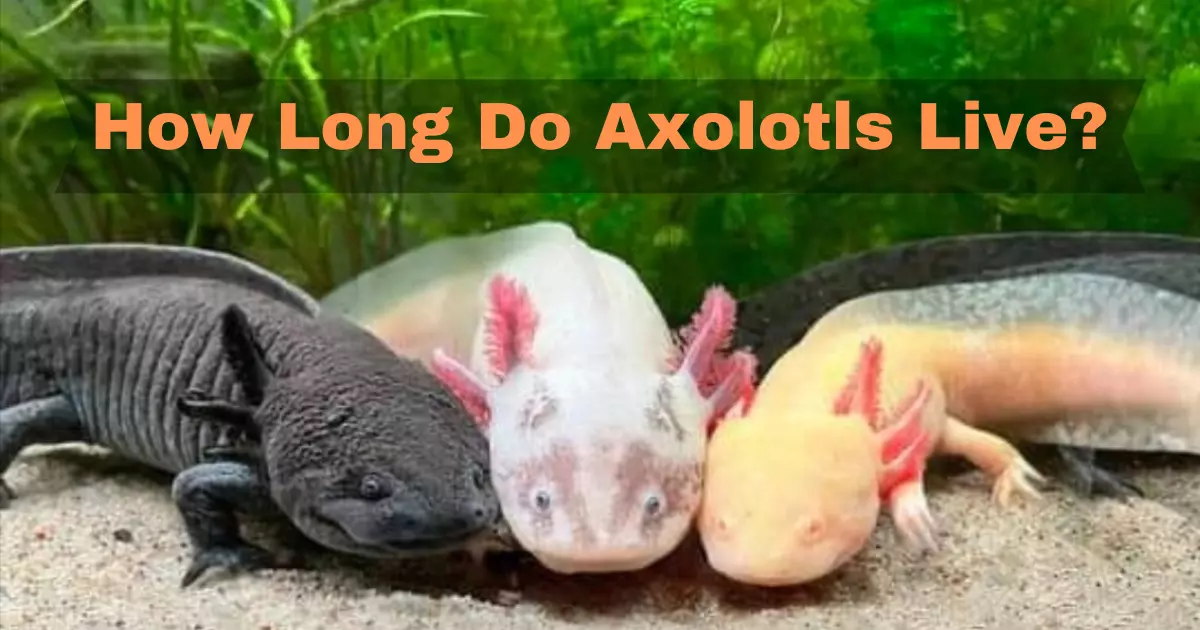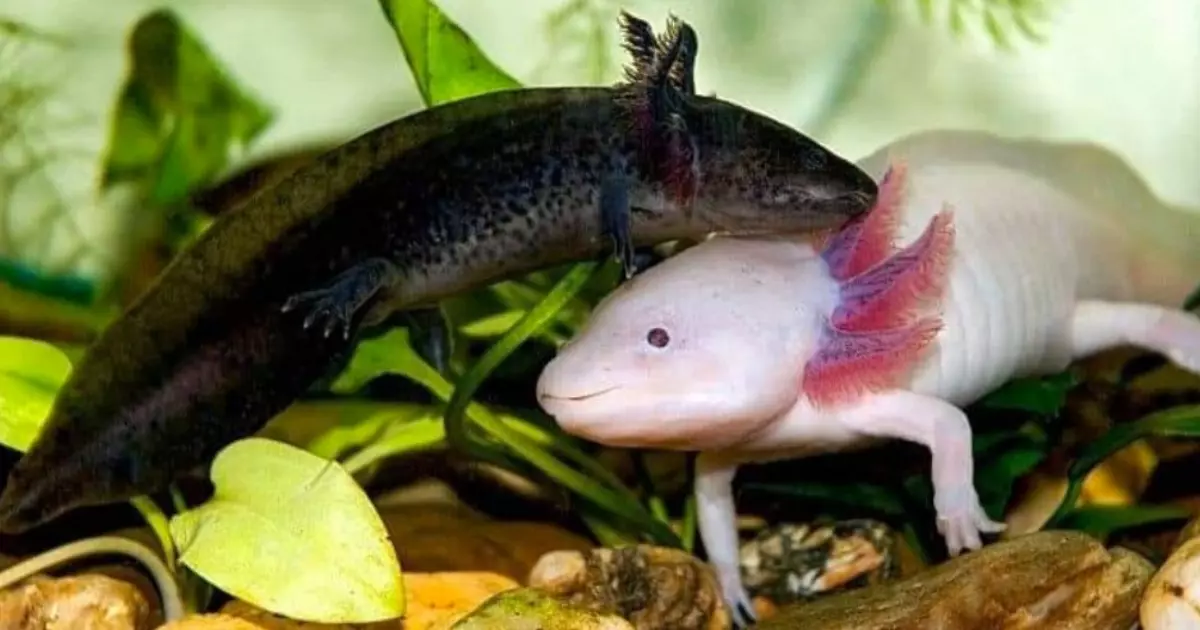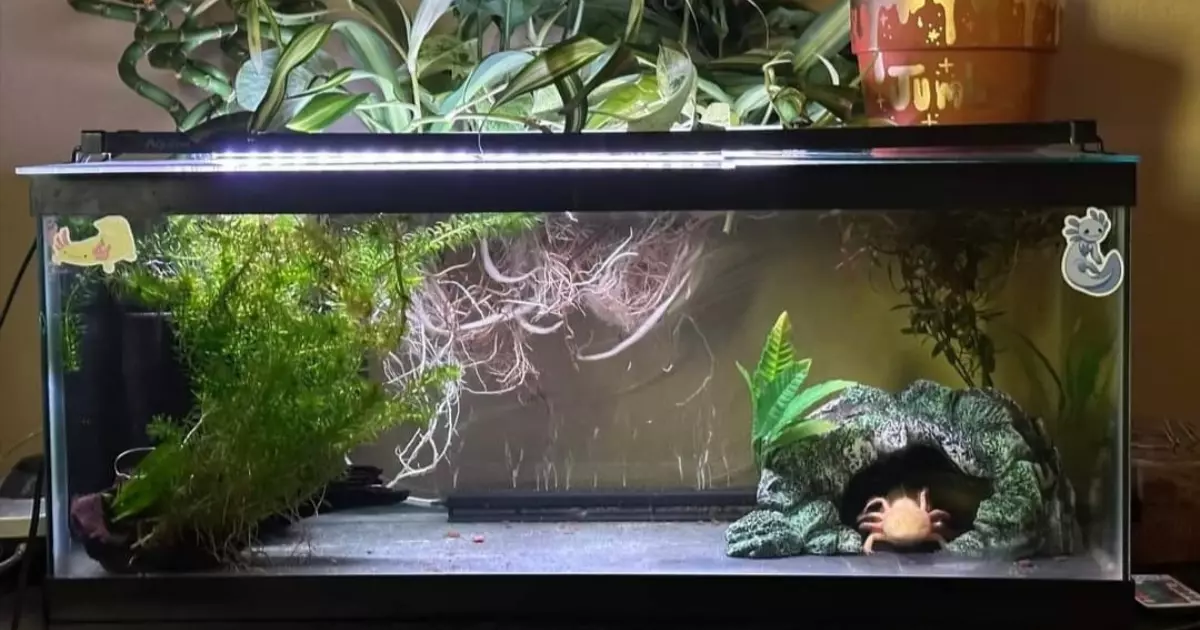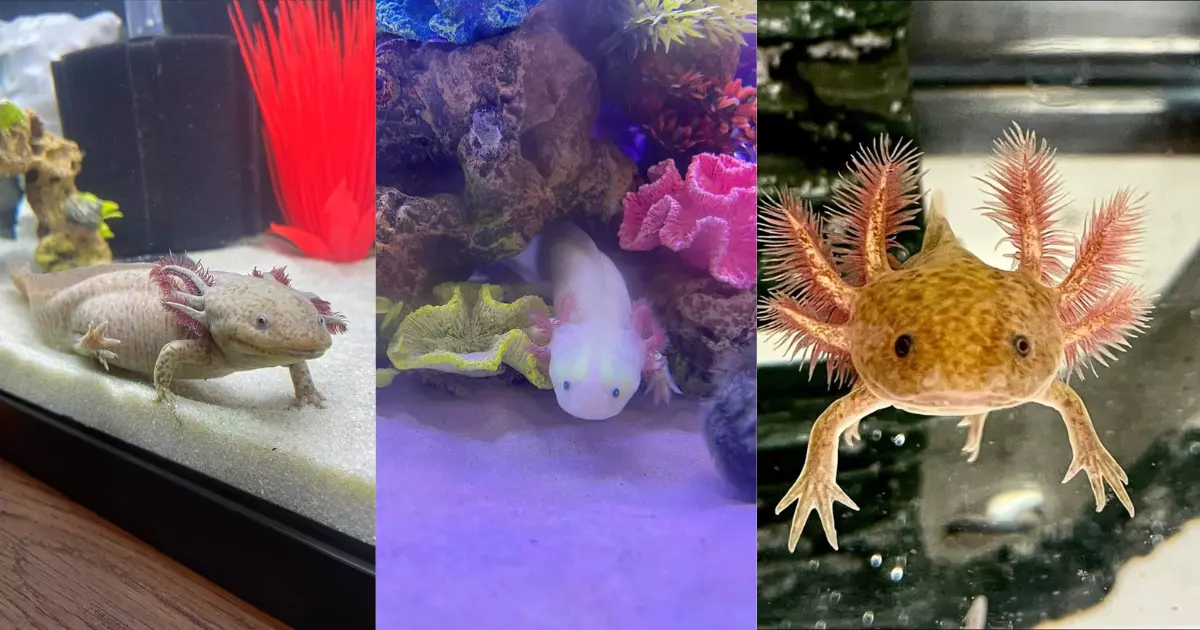Axolotls, often referred to as “Mexican walking fish,” are fascinating creatures that capture the attention of many pet enthusiasts and biologists alike. These unique amphibians belong to the salamander family and are known for their regenerative abilities and the retention of juvenile characteristics throughout their lives.
One common question that arises when considering axolotls as pets is, “How long do axolotls live?” In this article, we will explore the factors influencing the lifespan of axolotls and provide essential tips for ensuring their longevity.

Contents
- How Long Do Axolotls Live
- Lifespan in Captivity
- Factors Affecting Axolotl Lifespan:
- Maintaining Optimal Water Conditions:
- Proper Nutrition for Longevity
- Genetic Factors and Health Conditions
- Tips for Extending the Lifespan of Axolotls
- Lifespan Expectations of Different Axolotl Varieties
- Conclusion
- Frequently Asked Questions (FAQs):
- Q1: What is the average lifespan of an axolotl?
- Q2: Can axolotls live for more than 10 years?
- Q3:Do axolotls have a shorter lifespan in captivity?
- Q4: Can axolotls live longer with proper care?
- Q5: How can I ensure my axolotl stays healthy and lives longer?
- Q6: Can axolotls survive outside of water?
- Q7: How often should I clean my axolotl’s tank?
- Q8: Can axolotls regrow their limbs?
- Q9: Can axolotls live with other fish or amphibians?
- Q10: How large do axolotls grow?
How Long Do Axolotls Live
In their natural habitat, axolotls primarily inhabit the lakes and canals of Mexico.
In the wild, these creatures typically live for around 10 to 15 years. However, it’s important to note that several factors can influence their lifespan.
Axolotls are known for their ability to regenerate lost body parts, but this process requires a significant amount of energy.
The frequency of regeneration and the extent of injuries sustained can impact their overall lifespan.
Lifespan in Captivity
When kept in captivity, axolotls have the potential to live longer than their wild counterparts.
With proper care and an ideal environment, they can reach 15 to 20 years or even longer.
The controlled conditions of a well-maintained aquarium or tank allow for a reduced risk of predation and exposure to harmful elements.
Factors Affecting Axolotl Lifespan:

- Water Quality and Temperature:
Maintaining optimal water conditions is crucial for the health and longevity of axolotls. The water should be clean and free from toxins, such as ammonia and chlorine.
Axolotls are cold-water creatures, preferring temperatures between 60°F (15°C) and 68°F (20°C). Sudden temperature fluctuations or extremes can stress the axolotls and impact their lifespan.
- Diet and Nutrition: Providing a balanced and appropriate diet is essential for axolotls’ well-being. Their diet mainly consists of live or frozen foods like bloodworms, brine shrimp, and daphnia.
Overfeeding or offering inappropriate food can lead to obesity, which can shorten their lifespan. It’s important to feed them in moderation and provide a varied diet to ensure they receive all necessary nutrients.
- Genetics and Health Conditions: Genetic factors play a role in the lifespan of axolotls. Some individuals may have inherent health conditions or genetic predispositions that can impact their longevity.
It is essential to obtain axolotls from reputable breeders to reduce the risk of genetic issues. Regular health check-ups and prompt attention to any signs of illness or abnormalities are crucial for their overall well-being.
- Read More:- What is an Axolotl?
- Read More:- Life Cycle of an Axolotl with Pictures
Maintaining Optimal Water Conditions:
To ensure the longevity of your axolotl companion, it is vital to maintain optimal water conditions.
Regularly test the water for parameters such as pH, ammonia, nitrite, and nitrate levels.
A pH level of 6.5 to 8.0 is considered suitable for axolotls. It’s crucial to keep the water clean by regularly performing partial water changes and using a good filtration system.
A stress-free environment with appropriate water conditions promotes the overall health and lifespan of axolotls.
Proper Nutrition for Longevity
Axolotls require a diverse diet to meet their nutritional needs. Offer them a combination of protein-rich live or frozen foods like bloodworms, brine shrimp, daphnia, and earthworms.
Avoid feeding them excessive amounts, as it can lead to obesity, which can negatively impact their lifespan. Feed them once a day, offering an amount they can consume within 10 to 15 minutes.
Providing a balanced diet will ensure they receive the necessary nutrients to thrive and live a longer, healthier life.
Genetic Factors and Health Conditions
While axolotls are generally hardy creatures, they can be susceptible to certain genetic conditions and health issues.
Some common genetic problems include bent or crooked limbs, gill deformities, and other abnormalities.
It is essential to choose axolotls from reputable breeders who prioritize the health and genetic diversity of their breeding stock.
Regularly monitor your axolotl for any signs of illness or distress, such as changes in appetite, skin lesions, or abnormal behaviour.
Consulting a veterinarian experienced in amphibian care is crucial to address any health concerns promptly.
Tips for Extending the Lifespan of Axolotls

- Regular Tank Maintenance: Perform regular tank maintenance, including partial water changes, to ensure a clean and healthy environment for your axolotls. Remove any uneaten food, debris, or waste to maintain water quality.
- Monitoring Water Parameters: Regularly test and monitor water parameters, including pH, ammonia, nitrite, and nitrate levels. Make necessary adjustments to keep the water conditions within the ideal range.
- Providing a Balanced Diet: Offer a varied diet consisting of live or frozen foods suitable for axolotls. Avoid overfeeding and provide appropriate portion sizes to prevent obesity.
- Avoiding Stressors: Minimize stressors in the axolotl’s environment, such as sudden loud noises, vibrations, or frequent handling. Stress can impact their overall health and lifespan.
- Creating Hiding Places: Provide hiding places in the aquarium using caves, plants, or other structures. Axolotls appreciate having areas to retreat and feel secure, reducing their stress levels.
Lifespan Expectations of Different Axolotl Varieties

The lifespan of axolotls can also vary depending on their color morphs or varieties.
While there is no significant difference in lifespan between the different varieties, some anecdotal evidence suggests that lighter-coloured axolotls, such as white or golden albino axolotls, may have slightly shorter lifespans compared to their darker-coloured counterparts.
However, individual care, genetics, and environmental factors play a more significant role in determining lifespan than the specific color morph.
Conclusion
In conclusion, axolotls have an average lifespan of 10 to 15 years in the wild, but with proper care, they can live significantly longer in captivity.
Factors such as water quality, nutrition, genetics, and overall health play crucial roles in determining their lifespan.
By maintaining optimal water conditions, providing a balanced diet, and promptly addressing any health concerns, you can ensure your axolotl companion lives a long and fulfilling life.
Remember, the key to their longevity lies in providing a stress-free environment that mimics their natural habitat.
So, if you’re considering axolotls as pets, be prepared to offer them the care they need to thrive.
Frequently Asked Questions (FAQs):
Q1: What is the average lifespan of an axolotl?
A: In the wild, axolotls typically live for around 10 to 15 years, but with proper care, they can reach 15 to 20 years or longer in captivity.
Q2: Can axolotls live for more than 10 years?
A: Yes, axolotls have the potential to live beyond 10 years, especially when provided with optimal care, suitable water conditions, and a balanced diet.
Q3:Do axolotls have a shorter lifespan in captivity?
A: No, axolotls can actually have a longer lifespan in captivity if provided with proper care, appropriate nutrition, and an optimal environment.
Q4: Can axolotls live longer with proper care?
A: Absolutely! Axolotls can live longer with diligent care, including maintaining ideal water conditions, providing a balanced diet, and promptly addressing any health concerns.
Q5: How can I ensure my axolotl stays healthy and lives longer?
A: To ensure your axolotl’s health and longevity, maintain clean water conditions, offer a varied and balanced diet, monitor their behaviour and appearance for any signs of illness, and seek veterinary care when needed.
Q6: Can axolotls survive outside of water?
A: Axolotls are fully aquatic animals and are not adapted to survive outside of water for extended periods. They require water to breathe and maintain their overall well-being.
Q7: How often should I clean my axolotl’s tank?
A: Regular tank maintenance is essential for your axolotl’s health. Perform partial water changes every 1-2 weeks, and remove any uneaten food or waste to maintain optimal water quality.
Q8: Can axolotls regrow their limbs?
A: Yes, axolotls have remarkable regenerative abilities and can regrow lost limbs, tails, and even parts of their organs. This unique ability sets them apart from many other species.
Q9: Can axolotls live with other fish or amphibians?
A: It’s generally best to keep axolotls in a species-specific tank. They have delicate gills and may nip at or consume smaller fish or amphibians. Additionally, other tank mates may compete for resources or introduce diseases.
Q10: How large do axolotls grow?
A: Axolotls can grow up to 10-12 inches (25-30 cm) in length, although some individuals may reach even larger sizes. Providing an adequately sized tank is important to accommodate their growth.

5 thoughts on “Axolotl Lifespan – How Long Do Axolotls Live in Compared to the Wild?”